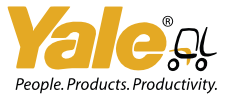More advanced, productive, and safe
Technology is revolutionizing supply chains. And more than ever before, operations face immense pressure to perform. Success in the increasingly advanced warehouse market requires combining expertise in the latest solutions with a proven commitment to safety. With such an intense focus on implementing more advanced technology to maximize output and efficiency, how can operations stay focused on safety?
Training
It starts with fundamentals, like comprehensive operator training. Putting lift truck operators through training that complies with Occupational Safety and Health Administration (OSHA) standards can help address what OSHA identifies as the cause of 70% of forklift accidents: operator error. Facilities looking to enrich their training portfolio may want to consider virtual reality simulation. While not a substitute for OSHA-mandated hands-on training, forklift simulators can help operators learn accurate equipment response, complete with automated, real-time feedback on their performance — all while experiencing and working in an immersive and realistic learning environment.
Telemetry
Telemetry systems like the Yale Vision wireless asset management system can help both management and operators improve safety. Alerts notify management of fault codes, scheduled maintenance, or potentially hazardous driving behaviors. GPS data can help operations understand high-risk areas for collisions and take action to identify more efficient routes. For individual operators, telemetry can help guide them through automated OSHA-compliant pre-shift checks, restrict equipment access to only authorized individuals, and limit truck performance based on operator experience.
Robotics
Warehouse turnover continues to be widespread, climbing from just over 40% annually to nearly 60% over a five-year period. With higher turnover, warehouses must scale up new operators, but with new, inexperienced operators comes increased risk of not following site-specific safety protocols and traffic rules. Robotics are an increasingly common presence in distribution centers, with robotic lift trucks able to automate repetitive warehouse tasks and work safely alongside human co-workers. From day one, thanks to navigation technology and site-specific programming, robotic lift trucks can adapt to surroundings and real-time conditions while strictly following safety protocols.
It’s more important than ever to invest in operator training on safe practices and to leverage technology for both productivity and safety in the pursuit of a better safety culture. As warehouses improve safety, they also get more productive. To learn more, go to www.yale.com/en-us/north-america/support-resources/safety/
Contributed by Yale Materials Handling Corporation
Related Articles
Copyright ©2024. All Rights ReservedDesign, CMS, Hosting & Web Development :: ePublishing
